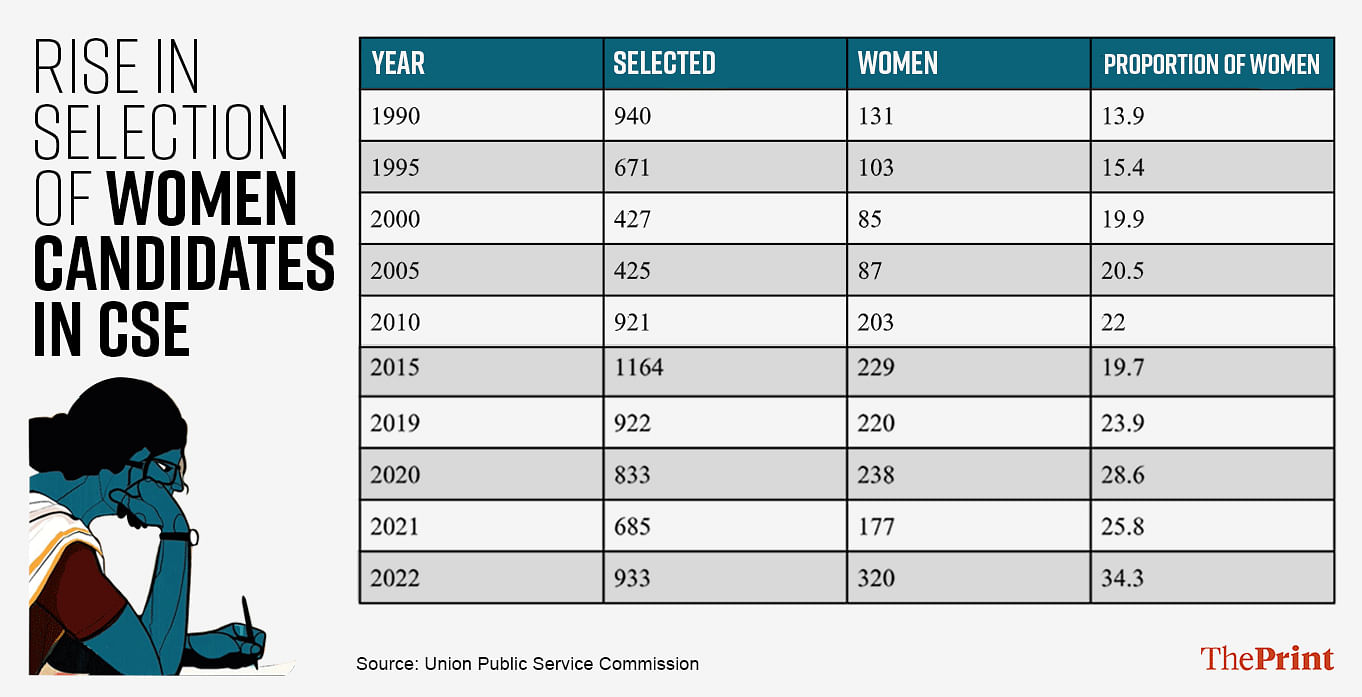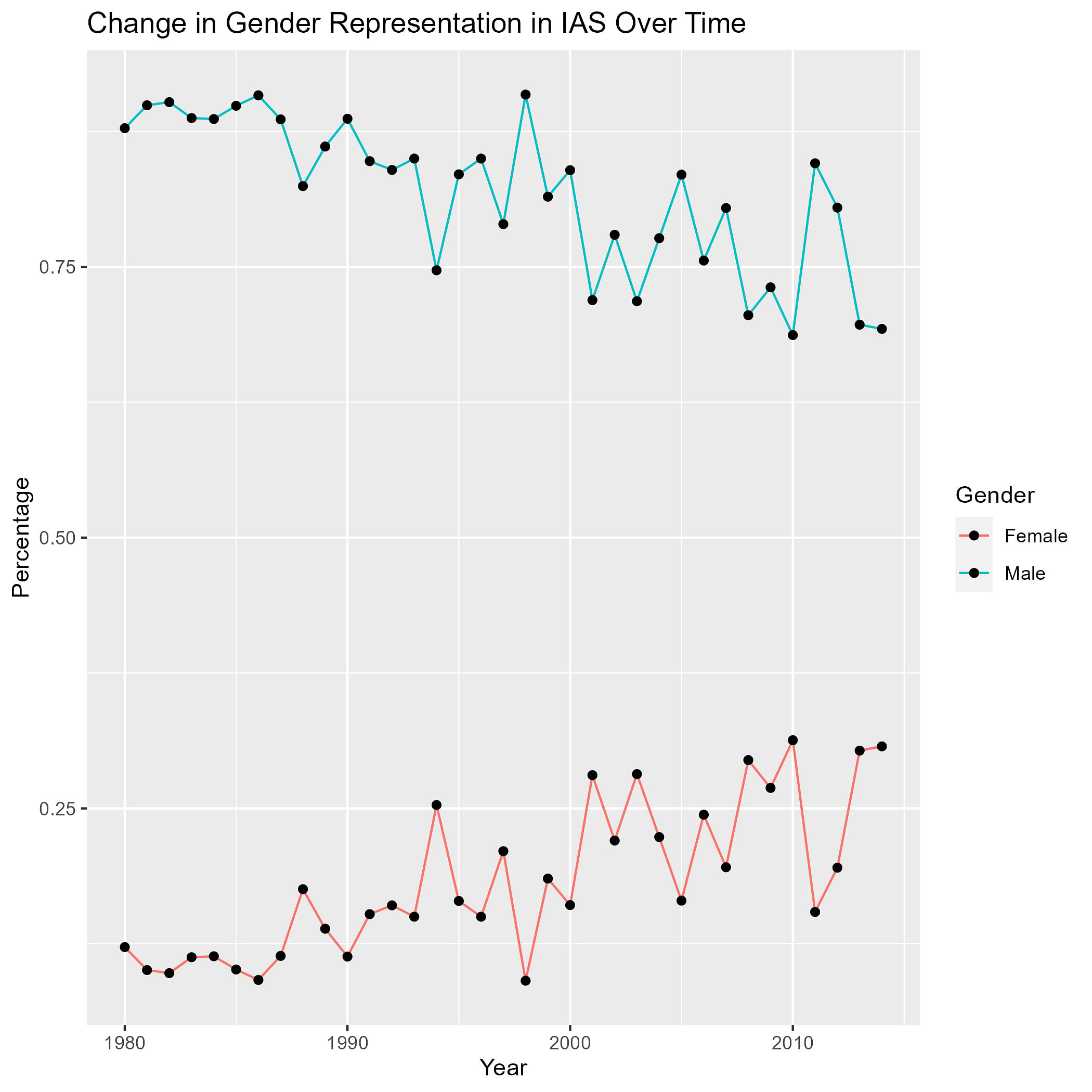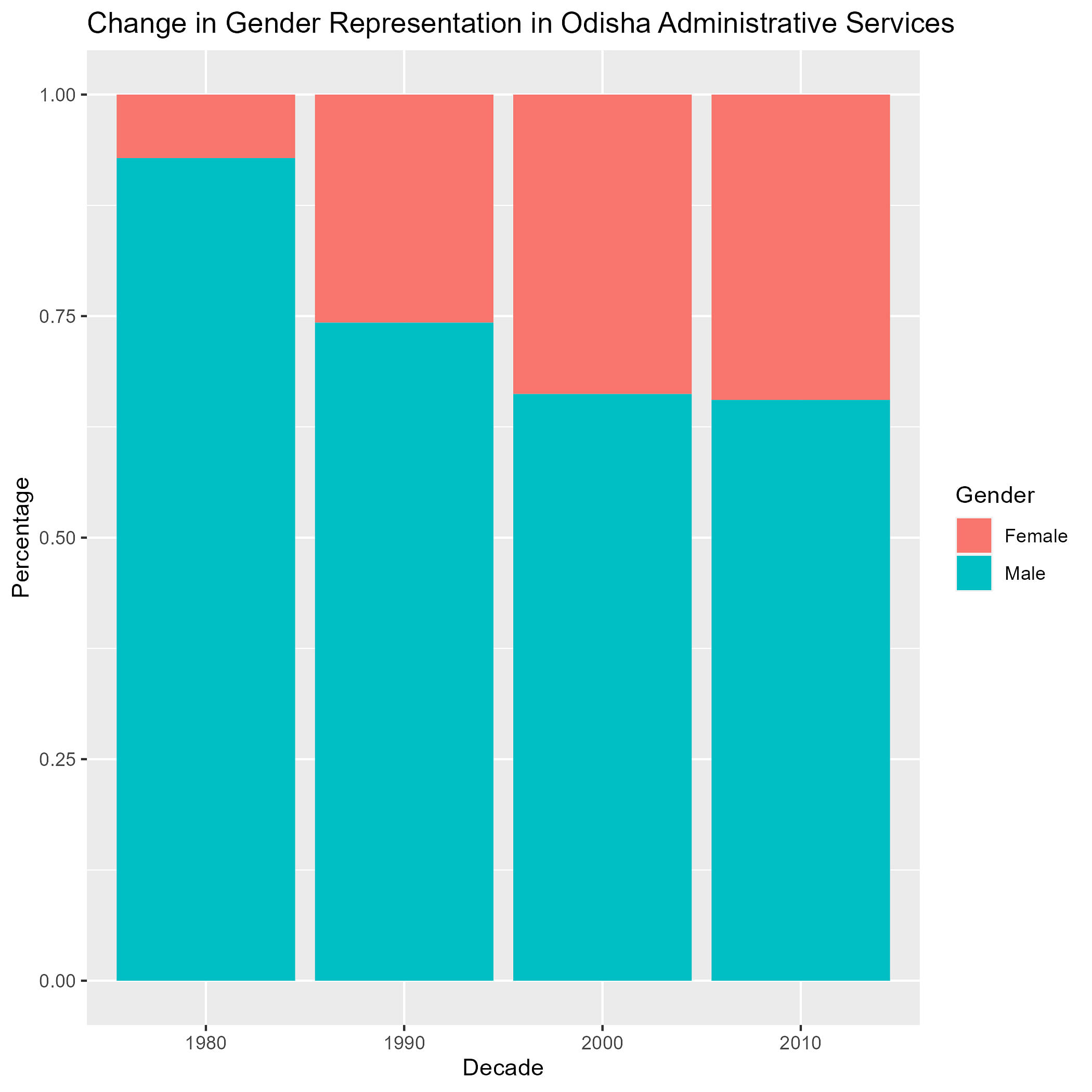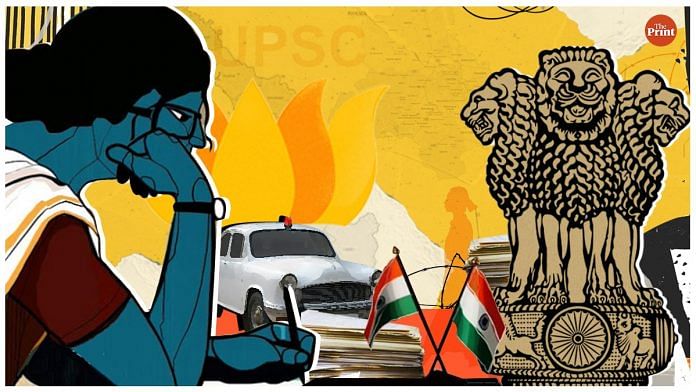The results of the Civil Services Examination 2022 marked a historic moment with women constituting more than one-third, or 34.3 percent, of the recommended candidates for appointment, the highest-ever figure. This increase in women’s representation in bureaucratic offices – from the elite Indian Administrative Services to provincial civil services at the state level to the lower judiciary – reflects long-term structural changes in Indian society and the economy. While barriers for women entering the bureaucracy persist and their representation remains inadequate, the growing number of women in these positions can have wide-ranging implications for governance and policy outcomes.
More women entering Indian bureaucracy
The trend of more women entering the Indian bureaucracy is evident when we examine the long-term patterns in the selection of women in the Civil Services Examination (CSE) conducted by the Union Public Service Commission (UPSC). In 1990, less than one-sixth of the recommended candidates were women, which increased to around one-fifth in the early 2000s. In 2020, more than one-fourth of selected candidates were women (28.6%). Finally, this figure reached its highest-ever level in 2022 (Table 1).

Moreover, women candidates have been securing the highest ranks in these examinations. For instance, in CSE 2022, women candidates secured the top four ranks. This has led to an increased number of women entering elite services like the Indian Administrative Service (IAS) – from 11 percent in the 1980s to 16 percent in the 1990s to 23 percent in the 2000s (Figure 1).

This trend is not limited to the IAS but extends to state-level administrative services as well. In Uttar Pradesh, in 2013, less than one-fifth (18.6 percent) of Provincial Civil Service (PCS) recruits were women. This increased to more than one-fourth (26.4 percent) in 2020. In the Odisha Administrative Service too, the number of women officers has increased substantially in the last two decades (Figure 2).

Data from the Staff Selection Commission (SSC) reveals similar trends in the recruitment of women in lower echelons of the bureaucracy. In 2011, merely 8.9 percent and 7 percent of successful candidates in the Combined Graduate Level Examination (CGL) and Combined Higher Secondary Level Examination, were women. More than a decade later, in 2021, the number of successful women candidates constituted 13.8 percent and 14.9 percent.
Finally, the increase in women’s representation extends beyond the administrative bureaucracy. In Uttar Pradesh today, nearly one-third (31.7 percent) of subordinate judges are women, a significant rise from 21.4 percent in 2019. The figure is likely to increase further due to a higher proportion of women in recent batches. In the 2019 UP Judicial Service Examination, more than half of the selected candidates (51.6 percent) were women.
How should we understand these broad patterns in gender representation?
Also read: More women are becoming IAS officers, but only a few get the prize post: District Collector
Surge in aspirations and rise in higher education
The increased representation seems to mirror the transformative structural changes in Indian society. For example, over time we have witnessed a marked increase in the number of women appearing in competitive examinations for public employment. The number of women appearing for the UPSC (Prelims) nearly tripled from 64,320 (or 23.9 percent) of all candidates in 2010 to 1,77,610 (or 31.3 percent of all candidates) in 2019. Further, this increase isn’t just limited to women from the dominant castes; the number of women candidates among SCs (from 14673 in 2010 to 35262 in 2019), STs (from 5680 to 13411), and OBCs (from 18246 to 47459) has also increased substantially.
The increase in the number of women appearing for public employment exams reflects the massive rise in women’s higher education attainment in India. In 1990-91, women constituted approximately one-third (32.5 percent) of all students enrolled in higher education. By 2016, near gender parity was achieved, with women constituting 45.9% of all enrolled students. According to the All India Survey on Higher Education 2020-21 report, the Gender Parity Index in higher education in India currently stands at 1.05, indicating that the number of women enrolled in higher education institutions surpasses that of men. Furthermore, the Gross Enrollment Ratio (GER) in higher education among women now exceeds the ratio among men.
Implications of more women in bureaucracy
The increase in the number of women bureaucrats has implications for all three dimensions of representation: descriptive, symbolic, and substantive.
Descriptively, it reflects a more equitable society where women, constituting half of India’s population, find equal representation in bureaucratic institutions. The Indian bureaucracy has historically failed to achieve this goal but recent trends indicate that the Indian state can come closer to mirroring the society it serves.
Symbolically, women holding powerful positions such as District Magistrates or judges can serve as role models and inspire attitudinal changes, particularly among young girls aspiring for public office, and lower bias towards women bureaucrats.
Substantively, women’s increased presence in the bureaucracy can influence policy-making and governance, bringing attention to issues affecting women and reflecting their preferences. Moreover, the ‘gendered’ nature of citizen-state interactions could change as the number of women officers rises.
Cautious optimism
However, it is important to be cautious when being optimistic about the greater number of women entering the bureaucracy. We must be aware of the challenges women face in navigating the bureaucracy throughout their careers. Most women bureaucrats we interviewed told us that male domination and informal networks persist, which makes navigating power hierarchies challenging. This qualitative insight is evident in the data. As an analysis revealed, the distribution of postings and positions among bureaucrats remains ‘gendered’; women IAS officers were more likely to be posted in cultural affairs, education, and welfare-related departments.
Further, we find that recruitment processes without clear rules for meritocratic selection can limit women’s representation, particularly in promotion-based entry into upper-level services.
These barriers and persisting challenges should be a constant reminder that the equitable representation of women within the Indian State will require consistent efforts that address the barriers faced by women throughout their careers and at multiple levels. Gender equality cannot be achieved without a concerted effort from both outside and inside the bureaucracy.
Anustubh Agnihotri is an Assistant Professor of political science at Ashoka University.
Pranav Gupta is a PhD Candidate at University of California, Berkeley. He tweets @p_gupta93.
(Edited by Prashant)



